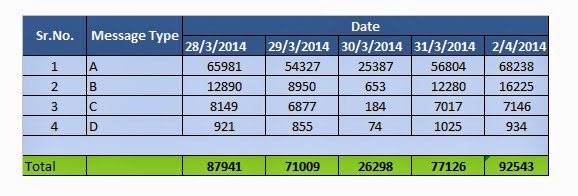Very slow insertion of record in Oracle database
Hi readers I am sharing this knowledge to all you to make you understand how to resolve issue related to very slow insertion of record in a database.
Platform:
OS: Windows Server 2003 32 bits.
Oracle Version: 10.2.0.1 Enterprise Edition.
Issue Observed:
Its an issue related to slow insertion of record and slow movement of messages in IBM MQ server from MQ local queue only connected to an oracle database server. As per observation found, that during morning insertion of messages are fine, but as the time passes and peak how started, the number of messages gets started increasing and movement of messages / insertion of record getting very slow.
One important think also observed that the table where the data gets inserted, in this table lots of DML operation related to (insertion and deletion) are going on in a high level.
Analysis for Issue:
1) Found fragmentation in table.
3) Observed one query that is used for fetching the records from these tables having Full table scan.
4) As per application team information it has been found that only 750 approx messages are being inserted
to table during peak hour when volume of messages goes beyond 50,000 in one hour, and there is a huge queue of messages started in local queue of MQ.
Solution.
1) Set the Initran value for these table to 50.
2) Create one index for the query.
Please see the explain plan for the same query before and after index creation,and number of execution for the same query is too high.
Observation after Changes.
1) More that 120 queries Full table scan has been resolved by creating one index.
2) As per application team information now 12000 approx messages are being inserted in a hour.
3) And we have achieved to transferred more than 90000 message in a day without any issue.
4) Application now doses't observed any pile up or MQ messages queue or stack from local queue of MQ.
Statistics of record inserted to the table without any slowness or pile up in MQ local queue.
Conclusion:
Finally we found that in morning as there is very less number of record present in table, so query was fetcing the record without delay, now during peak hour number of count increases in table and also number of record to be inserted to table also increasing simultaneously. So that is the reason that after creating the index and after increasing the Iinitran value the issue gets resolved.


